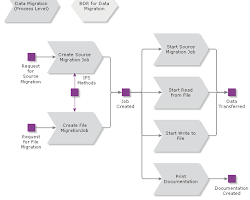
Migrating to the cloud is one of the most strategic decisions a company can make today. Promising agility, cost reduction, and innovation, the cloud is a powerful transformation lever. However, a poorly prepared migration can quickly turn into a costly and risky project. With my experience leading major infrastructure projects, I have consolidated a 5-step methodology, inspired by best practices like the AWS Well-Architected Framework, to ensure a successful transition.
Step 1: Assessment and Strategy (The "Why?")
Before moving a single line of code, it is crucial to understand *why* you are migrating. What are your business objectives? To reduce costs? To improve performance? To accelerate the deployment of new features?
- Existing Audit: Inventory your current applications and infrastructure. Identify dependencies, maintenance costs, and pain points.
- Defining the "6 R's": For each application, choose a migration strategy: Rehost (lift-and-shift), Replatform, Repurchase, Refactor, Retain, or Retire. This initial choice will dictate the complexity and cost of the project.
Step 2: Planning and Design (The "How?")
This is the architecture phase. You must design your future cloud infrastructure taking into account security, costs, performance, reliability, and operational excellence.
Do not simply replicate your on-premise infrastructure in the cloud. Take advantage of the migration to modernize and optimize.
Step 3: Migration (The Execution)
This is the technical transition phase. It must be carried out methodically to minimize risks and service interruptions.
Step 4: Validation and Testing
Once an application is migrated, it is essential to validate that it works as expected, or even better, than before.
Step 5: Optimization (The Continuous Cycle)
Migration is not the end of the project; it is the beginning of a new way of operating. The cloud offers continuous optimization opportunities that you must exploit.
A successful cloud migration is a strategic project that aligns technology with business objectives. By following these steps, you transform a technical challenge into a powerful competitive advantage. Contact RMS International Group to plan your migration.
